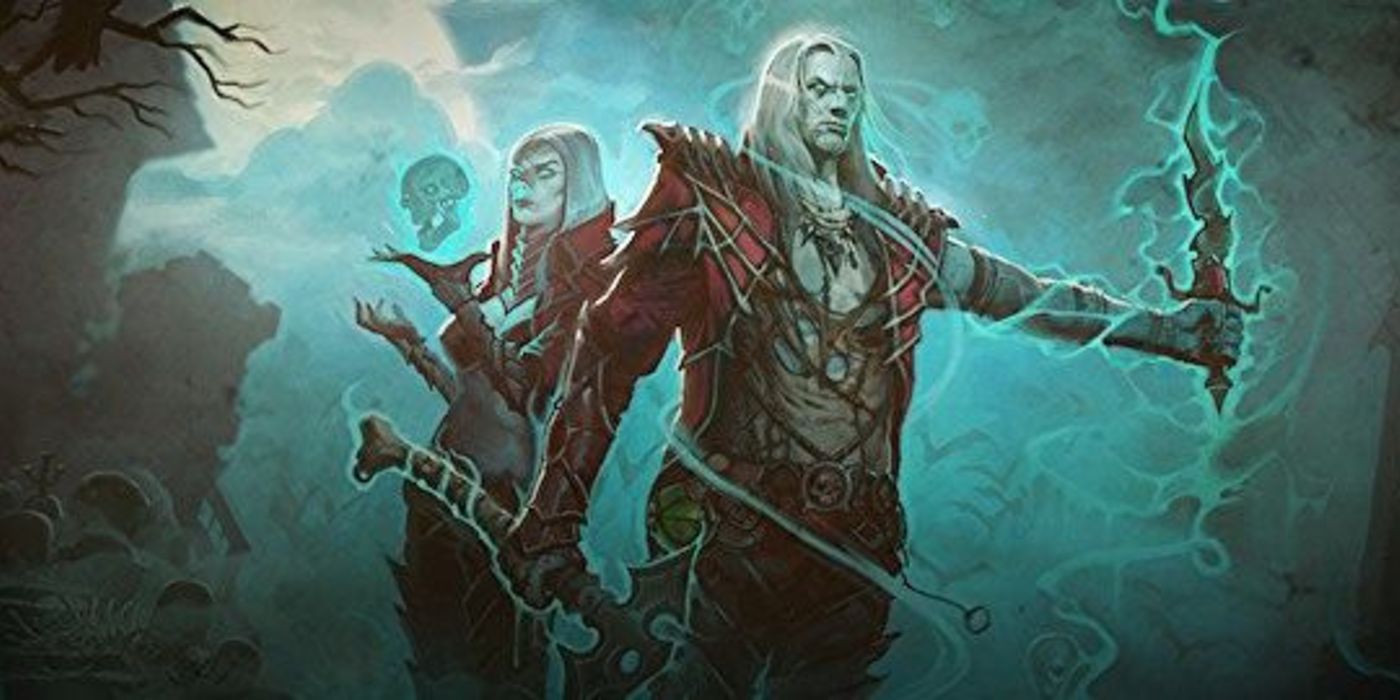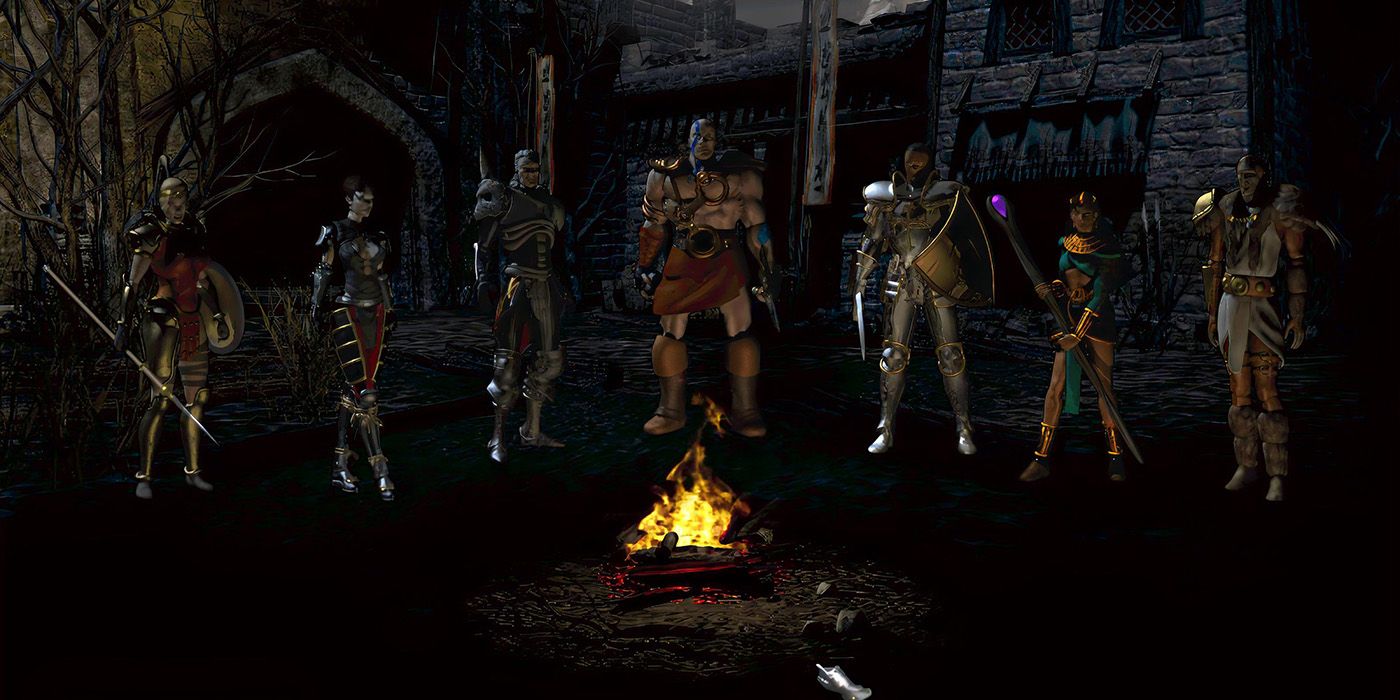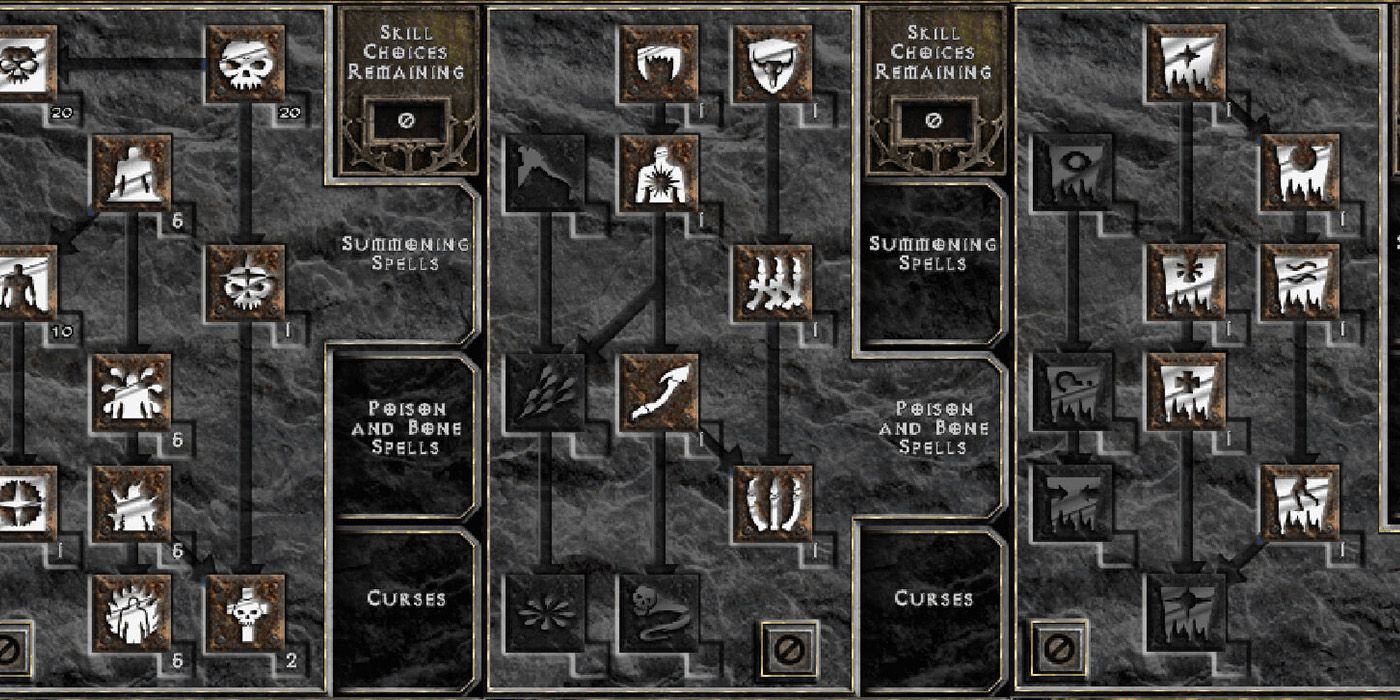Diablo 2: Resurrected - The Case for Playing Necromancer at Launch

Slowly but surely, Diablo 2: Resurrected's late 2021 release date is drawing near. One of the greatest joys of playing a remaster is revisiting old concepts or fresh, unexplored ideas, and Diablo 2 presents players with a difficult choice between seven promising classes. Those with a fondness for bones, black magic, summoning, and truly obscene explosive damage will likely be drawn to the Necromancer, though. That's not to say there isn't nuance or flexibility in the class, as the Necromancer will also appeal to anyone who appreciates a well-rounded casting class that can perform viably in every scenario.
Considering the Diablo 4 classes that have been revealed thus far and the fact that the Necromancer already saw an updated outing in Diablo 3: Reaper of Souls, it seems unlikely that the Necromancer will see a reprisal in Diablo 4. So, those looking to wake the dead in high definition will want to seize the chance in Diablo 2: Resurrected. While Reaper of Souls provided a satisfying modernization of the necromancer,in terms of thematic and mechanical synergy, Blizzard's take on the character circa 2000 remains one of the best executions of the archetype in ARPGs to date.
Those who never dabbled with the wizard of the dead before owe it to themselves to get familiar with the class' many options. And should fancy strike, players can already begin planning their build out in existing Diablo 2 skill calculators.

Not all lords of life and death need to specialize is osseous magic, but it must be said: a necromancer without bones is somewhat lacking. And as far as theming goes, few Necromancer builds are more in line with Blizzard's lore.
Mechanically, the path of the Bonemancer is not for the fainthearted. Certain aspects of the early leveling experience can be brutal, and solid gear is required to make the build sing. Those who persist however, will be awarded with an excellent PVP tool. Necromancers control the field with constructs such as Bone Wall and Bone Prison, trapping enemies or denying them convenient paths of approach.
Any Diablo Necromancer build really takes off, however, when the player chooses to dedicate themselves to either Bone Spirit or Bone Spear. At higher levels, Bone Spear will do more damage and pierce through enemies, but it will also guzzle mana. Bone Spirit does more damage at earlier levels, and has the advantage of homing in on its targets. Both of these skills receive synergy bonuses from the construct spell, boosting their already high damage. Finally, bonemancers usually have at least one skill point set aside for Clay Golem, which acts as a monstrous tank in both PVP and PVE scenarios.
A key component of most bonemancer builds are White Rune Words, which provide major bonuses to skills from the bone tree. Slotted into a wand that already has benefits for Bone Spirit or Bone Spear, this rune word will allow a necromancer to tear through throngs of enemies. Those who want to use Diablo 2's rune system to maximize their builds should consult a guide to see what synergizes best with their Bonemancers.

As a rule, gamers have an inexplicable fondness for blowing things up, and this rule tends to hold doubly true for those who enjoy playing spellcasters. If ridiculous, screen-clearing nukes sound fun, the Explosionmancer is the best Necromancer subclass fans could ask for. This variant is all about transforming corpses created by other players into catastrophic bombs. As such, the Explosionmancer is generally best enjoyed in a party where other hard-hitting characters can score the first kill. After that, the fireworks can begin.
By using the skill 'Corpse Explosion' on felled foes, the necromancer will detonate the cadaver, inflict a percentage of the victim's health (up to 120%) on every other adjacent enemy. This skill, used judiciously, has the habit of creating even more enemy corpses, allowing players to enjoy a delightfully macabre game of dominoes. The key to making Corpse Explosion sing is a support skill called 'Amplify Damage,' which increases the total explosion's damage by up to 50%. But the more important reason to maximize Amplify Damage is that it increases the radius of the explosion, allowing for a single well-felled body to wipe out legions of enemies—even if they are off screen.
Explosionmancers augment their explosive skills with Fire Golems, who make excellent tanks on the game's hell mode. Bone armor is another sound precaution. That said, there isn't a tremendous amount of variety in an Explosionmancer's kit compared to some other varieties of Necromancer, and while the joke is gleefully fun at first, it can gradually wear thin. That said, every serious Diablo 2 player should give it a spin, or partner with a body bomber at least once.

Those who find the classic necromantic premise of raising a host of skeletons and undead abominations appealing will be well-served by the Summonmancer build type. As one would expect, 'Raise Skeleton' and 'Skeleton Mastery' are essential early on in the Diablo 2 grind. Eventually, the goal will be to grab a point in every skill in the summoning tree, as well as amplify damage. Even though the conceit of raising a host of enemies seems simple enough, Summonmancers have to have a fairly strong grasp on all three skill trees to truly create an army. The essential rotation for a Summonmancer is to prioritize killing a few enemies with hard hitting spells like Bone Spear and curse magic, and then to raise skeletons en masse.
For the first few acts, a Necromancer can steamroll Hell's legions by themselves, but things get harder in the game's forth act, when enemies take more blows to go down. Paired with a party to create the initial wave of bodies, however, a Summonmancer becomes a truly terrifying force in PVE, and there are few things more appealing than seeing a wave of enemies devour their former comrades en masse.
Diablo 2: Resurrected is currently in development with a projected release in 2021.

Post a Comment